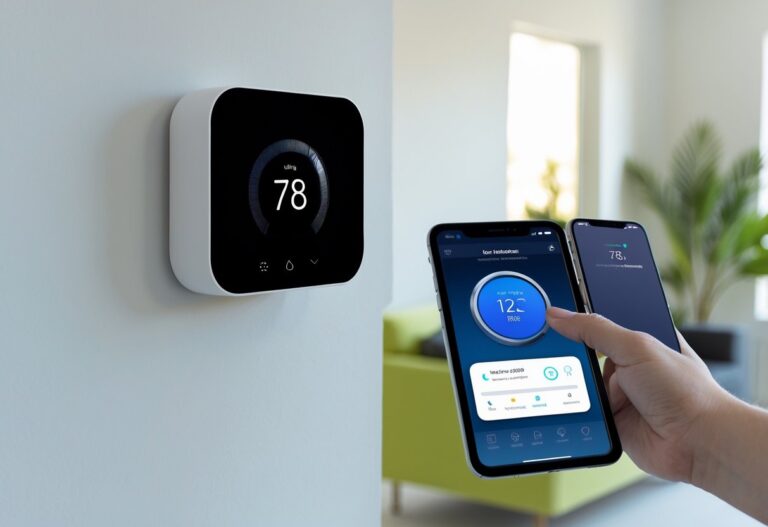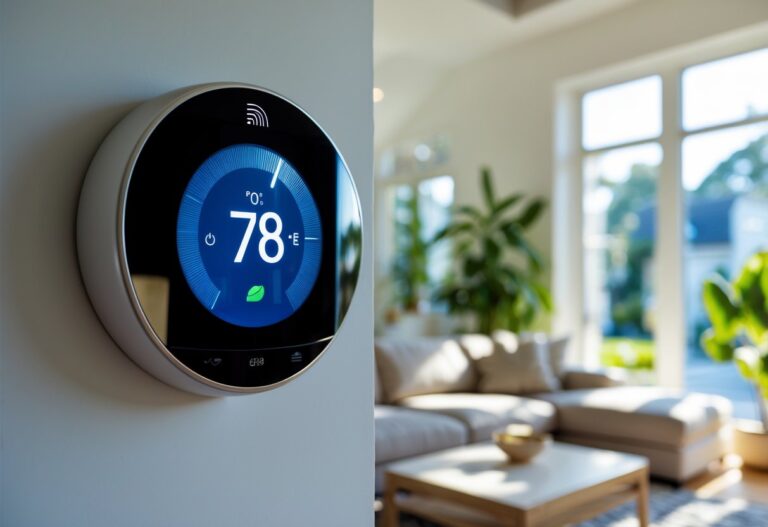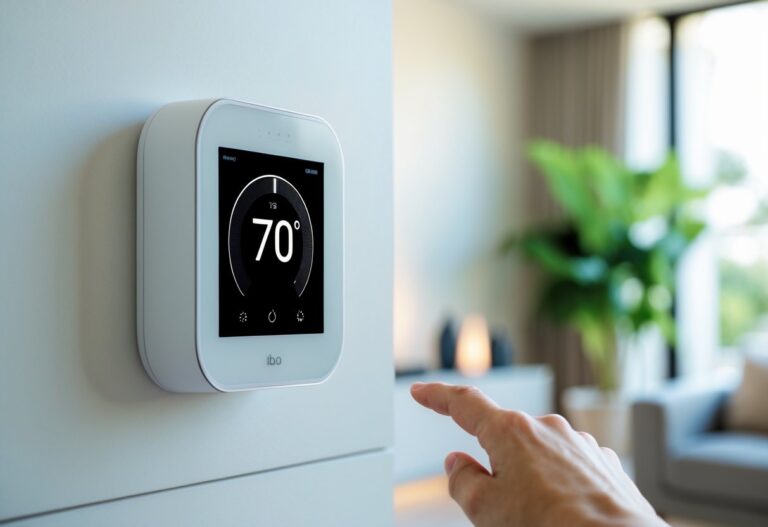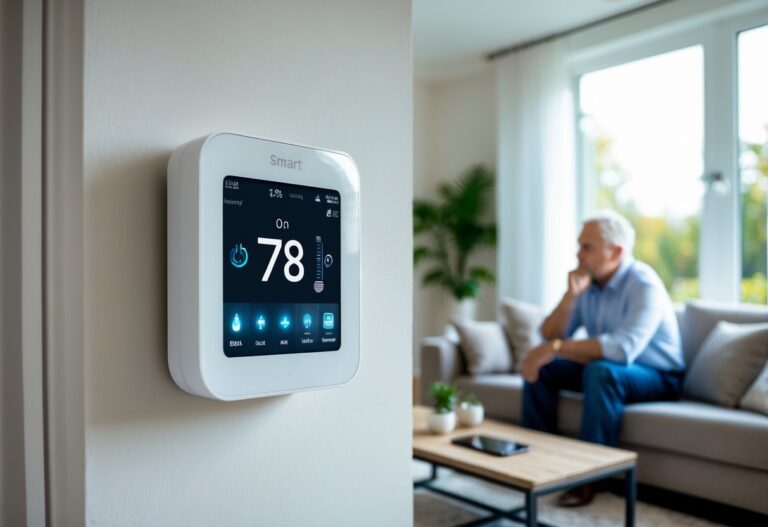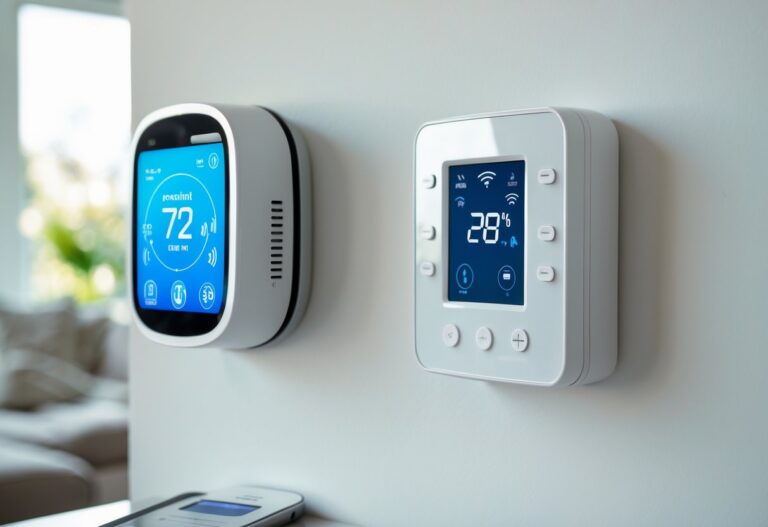Choosing the right smart thermostat for a variable speed fan can be confusing if you are trying to upgrade your home’s comfort system. Many popular models only offer basic support, while others are designed with more advanced fan control in mind. Not all smart thermostats can fully control a variable speed fan, so it’s important to know which ones are compatible before making a purchase.

If you want your variable speed fan to truly work as intended, you need a smart thermostat that can handle more than just simple on/off commands. Some models only switch the system between a few preset speeds, but the best options will let your fan adjust smoothly for maximum comfort and efficiency. Understanding which features and wiring requirements matter most will help you make the best choice.
Key Takeaways
- Not every smart thermostat works with variable speed fans.
- Features and wiring make a big difference in compatibility.
- Knowing what to look for helps you pick the right device.
Smart Thermostat Compatibility With Variable Speed Fans
Not every smart thermostat can control a variable-speed blower fan the way you might expect. Matching your hvac system to the correct thermostat depends on knowing your specific equipment, the wiring, and what kind of fan control is possible.
Understanding Variable-Speed Blower Fans
Variable-speed blower fans can adjust their speed in small steps or even smoothly ramp up and down. This lets your hvac system run quieter, use less energy, and keep a more even temperature.
These fans respond to signals from the thermostat or the furnace’s own control board. If your thermostat only sends an “on” or “off” signal, the fan won’t use its full range of speeds.
Most variable-speed blowers are managed by the furnace or air handler itself, not directly by the thermostat. The thermostat usually just tells the equipment that more heating or cooling is needed, and the equipment decides how fast to run the fan.
Types of Compatible Smart Thermostats
Some smart thermostats, like the Nest Learning Thermostat or ecobee models, can work with systems that use variable-speed blowers. However, they usually don’t control the fan speed directly—they just let the hvac unit’s own controls handle it.
Important features to look for:
- Support for multi-stage equipment (look for “2-stage” or “multi-stage” compatibility)
- Advanced fan control modes, such as “circulate,” “dehumidify,” or “fan runtime settings”
- Compatibility with your wiring, like the presence of a C-wire
If your system is a communicating or proprietary variable-speed system (for example, certain Trane or Carrier models), only the matched thermostat from the manufacturer will unlock full variable-speed control. Universal smart thermostats usually can’t send the special signals needed for these communicating hvac systems.
Manufacturer-Specific and Universal Options
Manufacturer-specific smart thermostats are made for certain brands, such as Trane ComfortLink or Carrier Infinity. These allow full control over variable-speed blowers, humidity, and advanced features.
Universal smart thermostats (like Nest, ecobee, Honeywell T9) work with most standard hvac systems, but with variable-speed blowers, they only signal when heating or cooling is needed. The equipment decides how fast the fan runs.
If you want to get the most out of a variable-speed blower fan, use the thermostat that’s designed for your hvac system. For most standard, non-communicating systems, high-end smart thermostats can give you convenient scheduling, Wi-Fi, and energy tracking, but not direct fan speed control. Always check compatibility on the manufacturer’s website and verify your wiring before buying.
Essential Features for Variable Speed Fan Control
Choosing a smart thermostat for a variable speed fan means paying close attention to system compatibility, control options, and energy-saving tools. Some thermostats offer advanced ways to connect and manage fan speeds, while others rely on basic wiring or app-based settings.
Communicating Versus Non-Communicating Thermostats
Variable speed fans often need a thermostat that can “talk” directly with the HVAC system. Communicating thermostats share information two ways with the furnace or air handler, allowing detailed control over fan speeds and performance.
Many factory models, especially from brands like Carrier or Trane, require their own communicating thermostats for full variable speed operation. This lets you take advantage of all fan speed settings, humidity controls, and diagnostic data.
Non-communicating thermostats, including most popular smart thermostats, usually work by controlling stages (low, medium, high), but might not access every feature of a true variable speed system. If your system is non-communicating, look for smart thermostats with multi-stage support and check your HVAC manual for compatibility.
| Category | Pros | Cons |
|---|---|---|
| Communicating Thermostats | Full feature support | Often brand-specific, higher cost |
| Non-Communicating Smart Thermostats | Easier to upgrade, Wi-Fi/app control | May not use full variable speed features |
Programmable and Wi-Fi Capabilities
A smart thermostat with programmable and Wi-Fi features gives you direct control from your phone, tablet, or voice assistant. You can change thermostat settings on the go, set schedules for comfort and savings, and often use geofencing to adjust temperatures when you leave or arrive home.
Popular Wi-Fi thermostats such as the Nest Learning Thermostat, ecobee SmartThermostat, and Honeywell T9 let you create schedules that fit your day. Many of these let you set the fan speed or use “fan only” modes within the app.
Wi-Fi connectivity brings real-time alerts, remote troubleshooting, and integration with other smart home devices. With a programmable thermostat, you can make sure the fan only runs when needed, reducing wasted energy and unnecessary wear.
Energy-Saving Technologies
Smart thermostats designed for variable speed fans use technology to improve efficiency. Features such as adaptive learning, motion sensors, and vacation modes help balance comfort with lower energy bills.
Learning thermostats remember your habits and adjust heating, cooling, and fan speeds based on patterns. Some models use geofencing to detect if you are home, switching to away mode automatically to save power.
Monitoring tools track your energy use and can send tips for more savings. Some smart thermostats support peak demand programs through your utility company. By running the fan at lower speeds or shutting off during high-rate periods, you can cut costs.
Look for models that support air quality sensors or advanced filtering, which use the fan to circulate and clean air efficiently without running at full speed all the time.
Compatibility Considerations and Wiring Requirements
Before choosing a smart thermostat for a variable speed fan, it’s important to know your HVAC system type, check which wires are present, and confirm compatibility with leading brands. These details help you pick a device that works reliably and safely with your heating and cooling equipment.
Identifying Your HVAC System Type
First, figure out the type of HVAC system you have. Common systems include furnaces, heat pumps, air conditioners, and boilers. Many homes today have variable speed furnaces or air handlers, which need thermostats with special control options.
Look for information on your system label or in your owner’s manual. Variable speed systems can adjust their fan speed to save energy and improve comfort. Not all thermostats support these features, so make sure yours lists compatibility with variable speed fans.
If you are unsure, write down the model number of your main unit and contact the manufacturer or a professional installer. Knowing your exact system type makes wiring and setup much easier.
Role of C Wire and R Wire
Smart thermostats almost always need a “C wire,” also called a common wire, for continuous power. The “R wire” brings power from your furnace, air conditioner, or boiler to the thermostat.
Without a C wire, most smart thermostats won’t work properly or may lose Wi-Fi connection. Some homes have only the R wire and other basic wires, so you may need to run a new wire or use an adapter.
Check your old thermostat’s wiring by removing the cover and counting the connected wires. If a wire labeled “C” is present, you are ready for most smart thermostats. Many brands offer wiring diagrams online—read these to avoid mistakes that could damage your system.
Brand Compatibility and Online Checkers
Not all smart thermostat brands support variable speed systems. For example, ecobee models list compatibility with many variable speed fans and multi-speed systems. Some brands, like Nest, have limited support and may only control high and low settings—not smooth variable speed control.
Many manufacturers offer online compatibility checkers on their websites. These ask about your HVAC type, current thermostat wiring, and sometimes the model number of your equipment. Fill in these details to get a clear answer on which thermostat models will work.
Double-check brand compatibility lists before buying. If you’re unsure, call customer support or get advice from a licensed HVAC technician. Correct compatibility prevents setup headaches and costly equipment damage.
